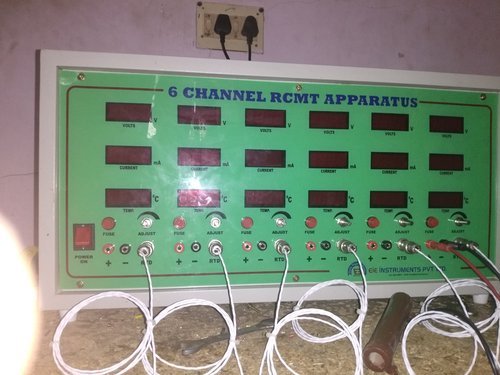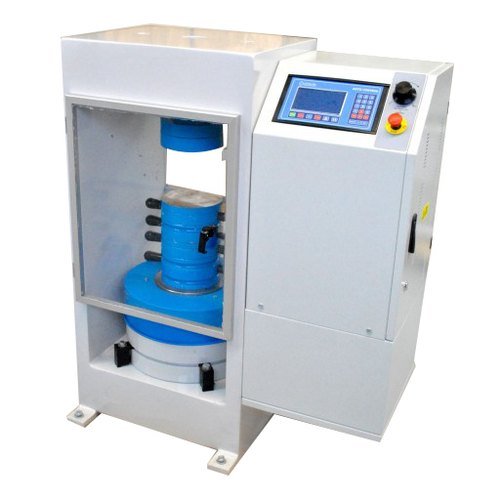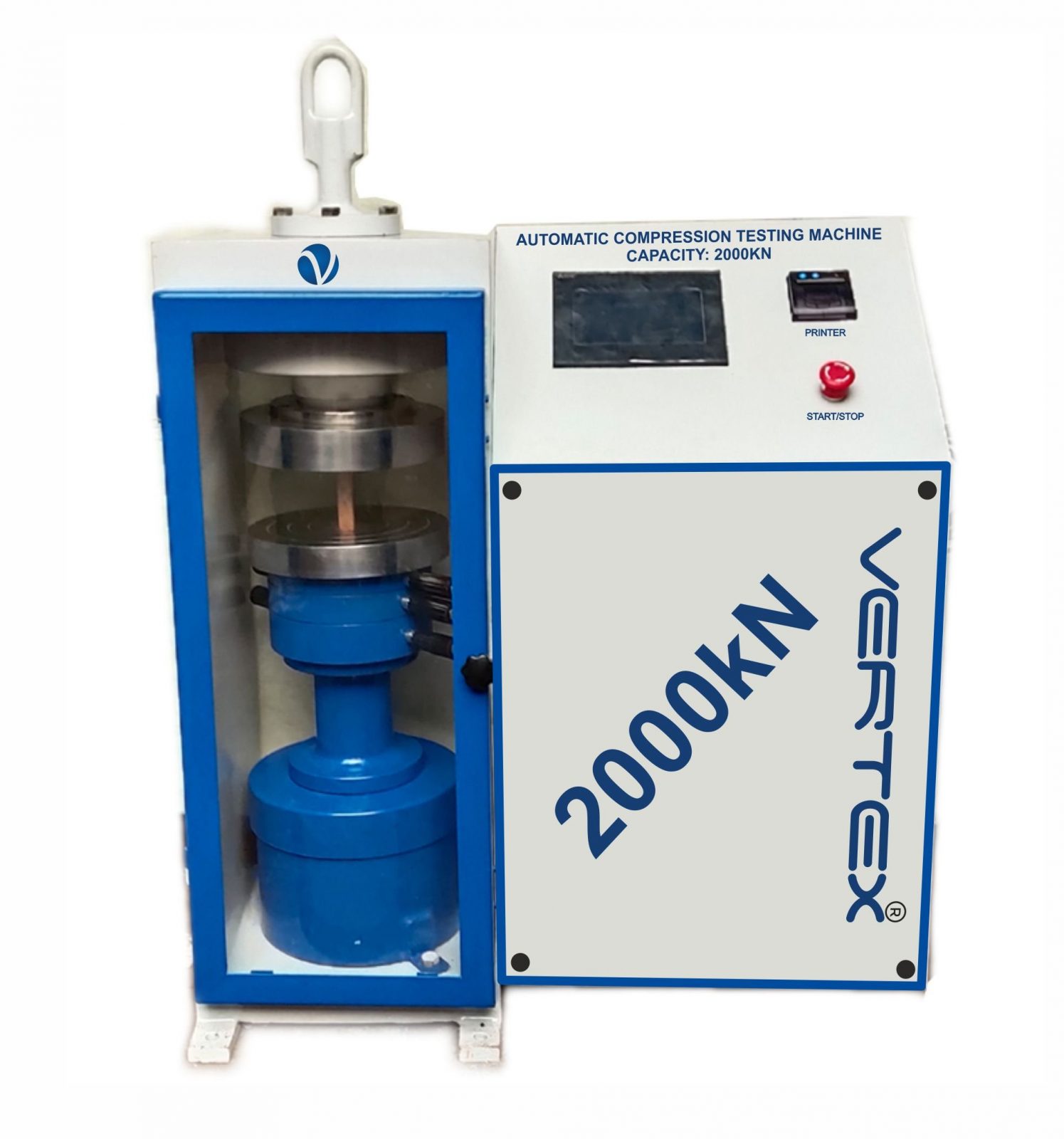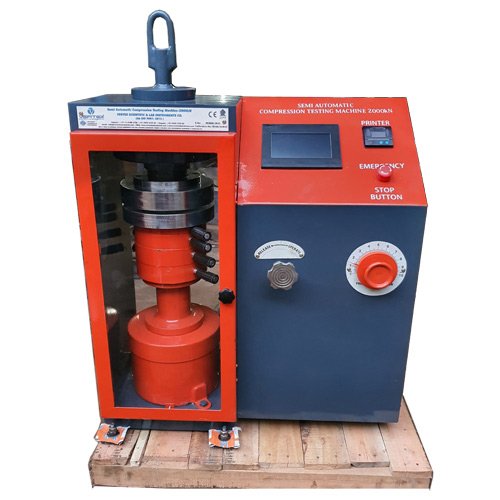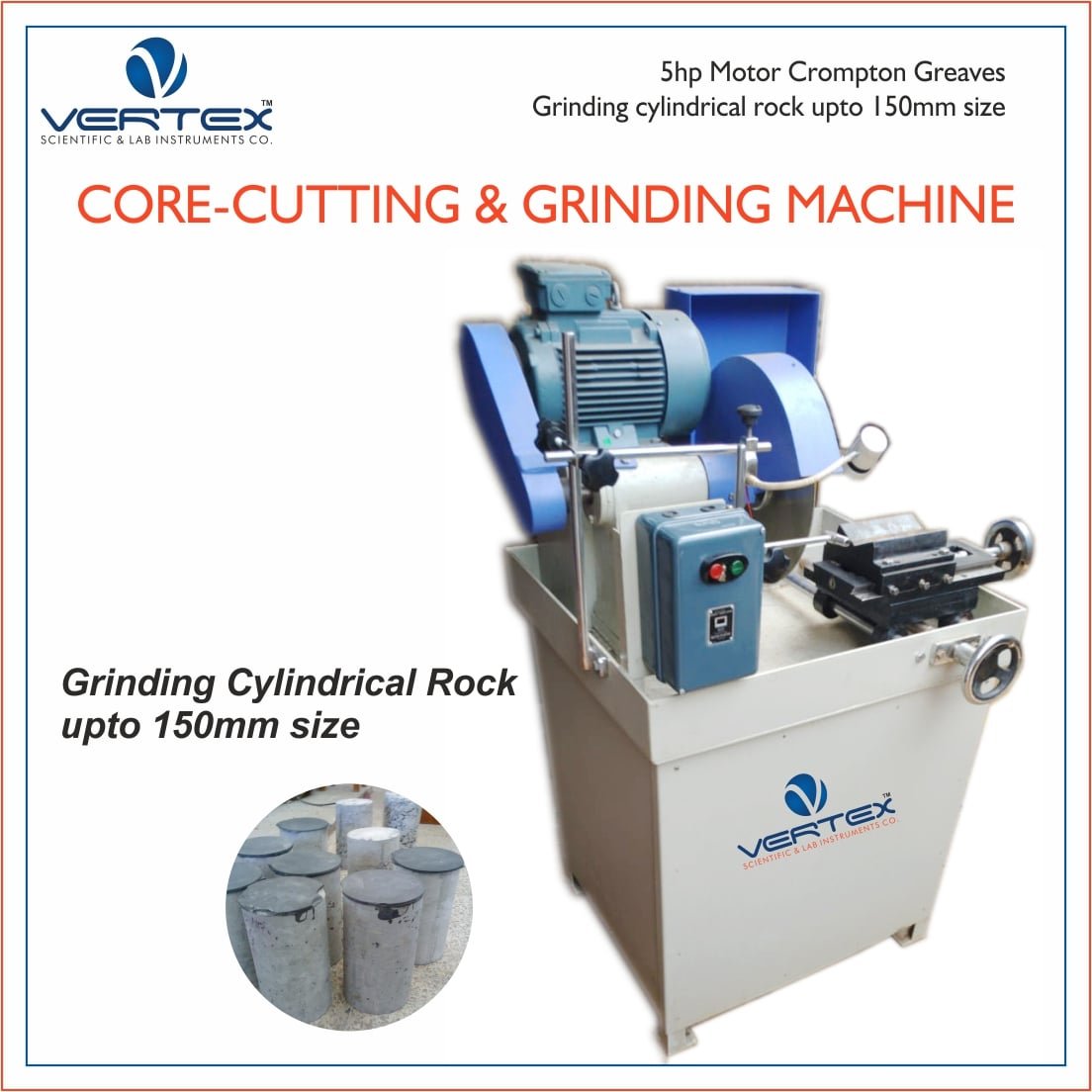An external electrical potential is applied axially across the specimen and forces the chloride ions outside to migrate into the specimen. After a certain test duration, the specimen is axially split and a silver nitrate solution is sprayed on to one of the freshly split sections. The chloride penetration depth can then be measured from the visible white silver chloride precipitation, after which the chloride migration coefficient can be calculated from this penetration depth.
Power supply: capable of supplying 0 ∼ 60 V DC regulated voltage with an accuracy of ±0.1 V.
· Three digit Digital Voltmeter 0-99. 9 volt range Qty 6 nos
· Three digit digital ammeter 0-999 mA Qty 6 nos
· Three digit digital Temperature indicator -99.9 deg C Qty 6 nos
· PT 100 RTD sensor for temperature sensing.
• Ammeter: capable of displaying current to ±1 mA.
•Thermometer or thermocouple with readout device capable of reading to ±1 °C.
• Any suitable device for splitting the specimen. Chisel and Hammer
•Spray bottle.
• Slide calliper with a precision of ±0.1 mm.
• Ruler with a minimum scale of 1 mm. • Equipment for chloride analysis as required by the test method employed.

